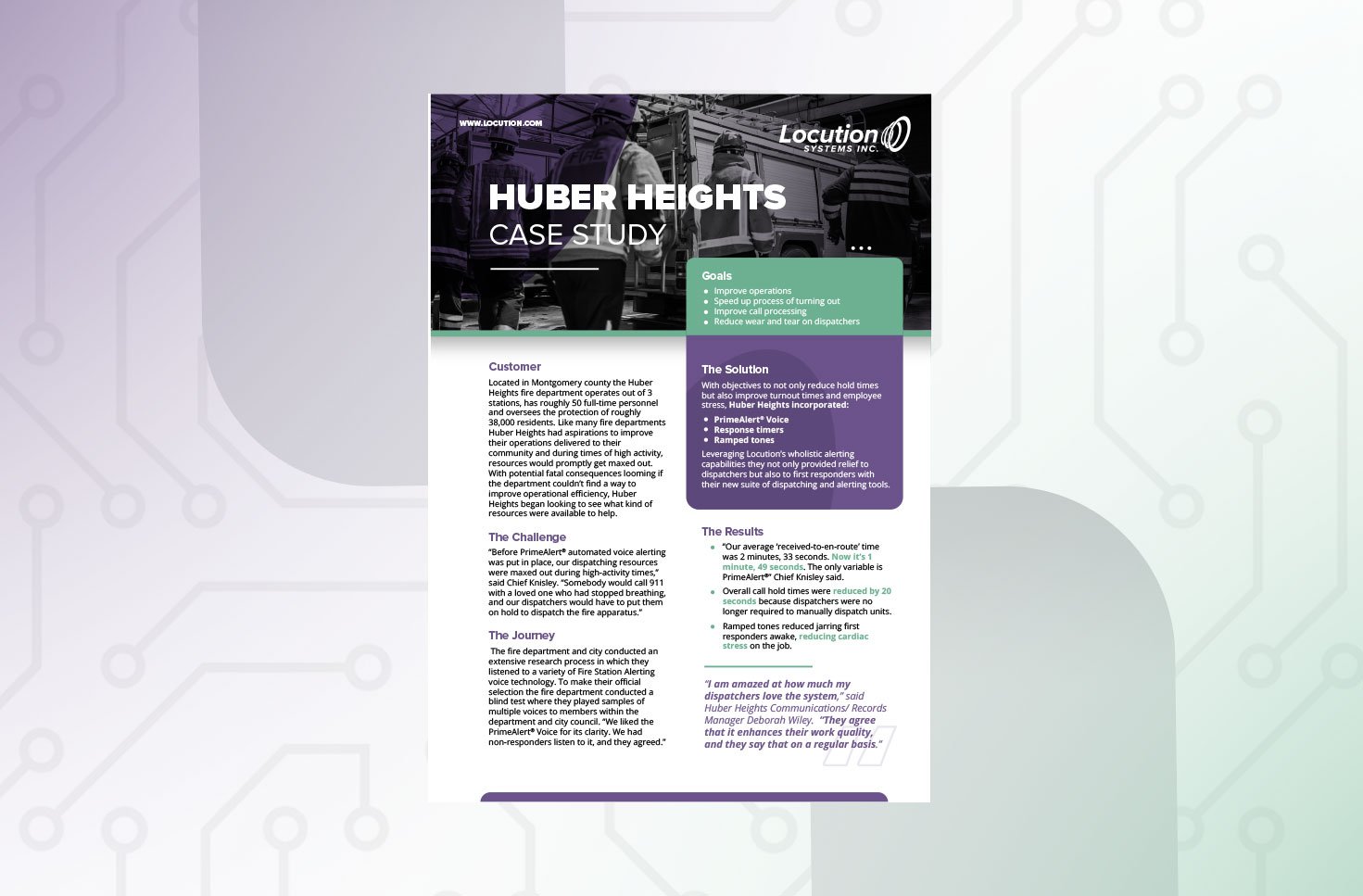Huber Heights Case Study
Goals
- Improve operations
- Speed up the process of turning out
- Improve call processing
- Reduce wear and tear on dispatchers
Customer
Located in Montgomery county the Huber Heights fire department operates out of 3 stations, has roughly 50 full-time personnel and oversees the protection of roughly 38,000 residents. Like many fire departments Huber Heights had aspirations to improve their operations delivered to their community and during times of high activity, resources would promptly get maxed out. With potential fatal consequences looming if the department couldn’t find a way to improve operational efficiency, Huber Heights began looking to see what kind of resources were available to help.
The Challenge
“Before PrimeAlert® automated voice alerting was put in place, our dispatching resources were maxed out during high-activity times,” said Chief Knisley. “Somebody would call 911 with a loved one who had stopped breathing, and our dispatchers would have to put them on hold to dispatch the fire apparatus.”
The Journey
The fire department and city conducted an extensive research process in which they listened to a variety of Fire Station Alerting voice technology. To make their official selection the fire department conducted a blind test where they played samples of multiple voices to members within the department and city council. “We liked the PrimeAlert® Voice for its clarity. We had non-responders listen to it, and they agreed.”
The Solution
With objectives to not only reduce hold times but also improve turnout times and employee stress, Huber Heights incorporated PrimeAlert® Voice, response timers, and ramped tones into their new workflow.
Leveraging Locution’s wholistic alerting capabilities they not only provided relief to dispatchers but also to first responders with their new suite of dispatching and alerting tools.
The Results
- Our average ‘received-to-en-route’ time was 2 minutes, 33 seconds. Now it’s 1 minute, 49 seconds. The only variable is PrimeAlert®” Chief Knisley said.
- Overall call hold times were reduced by 20 seconds because dispatchers were no longer required to manually dispatch units.
- Ramped tones reduced jarring first responders awake, reducing cardiac stress on the job.
Summary
“I am amazed at how much my dispatchers love the system,” said Huber Heights Communications/Records Manager Deborah Wiley. “They agree that it enhances their work quality, and they say that on a regular basis.”
